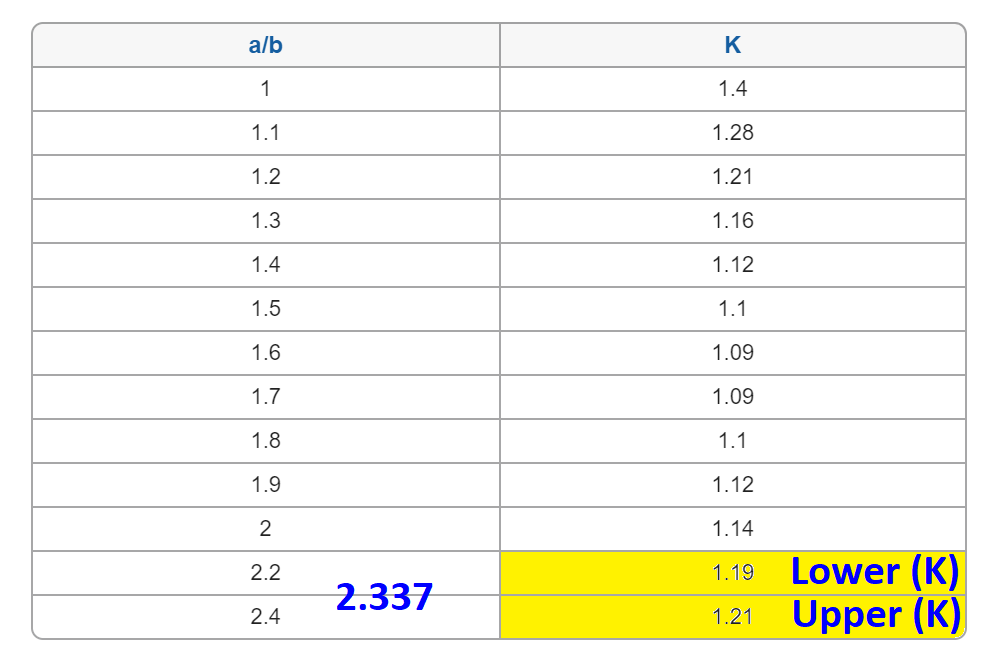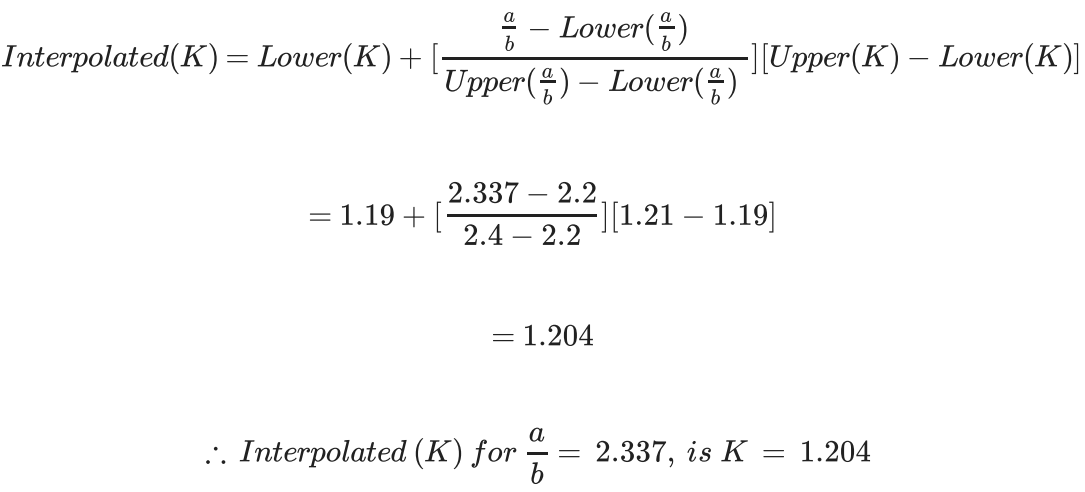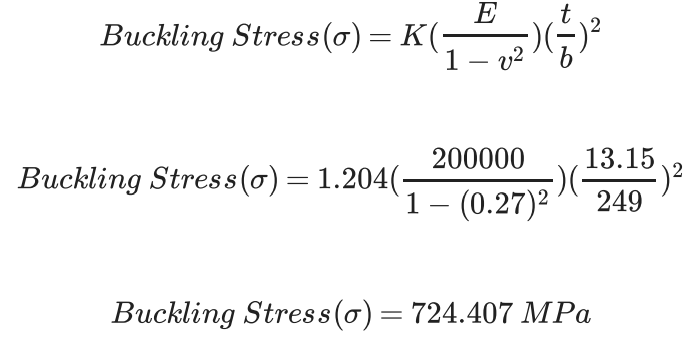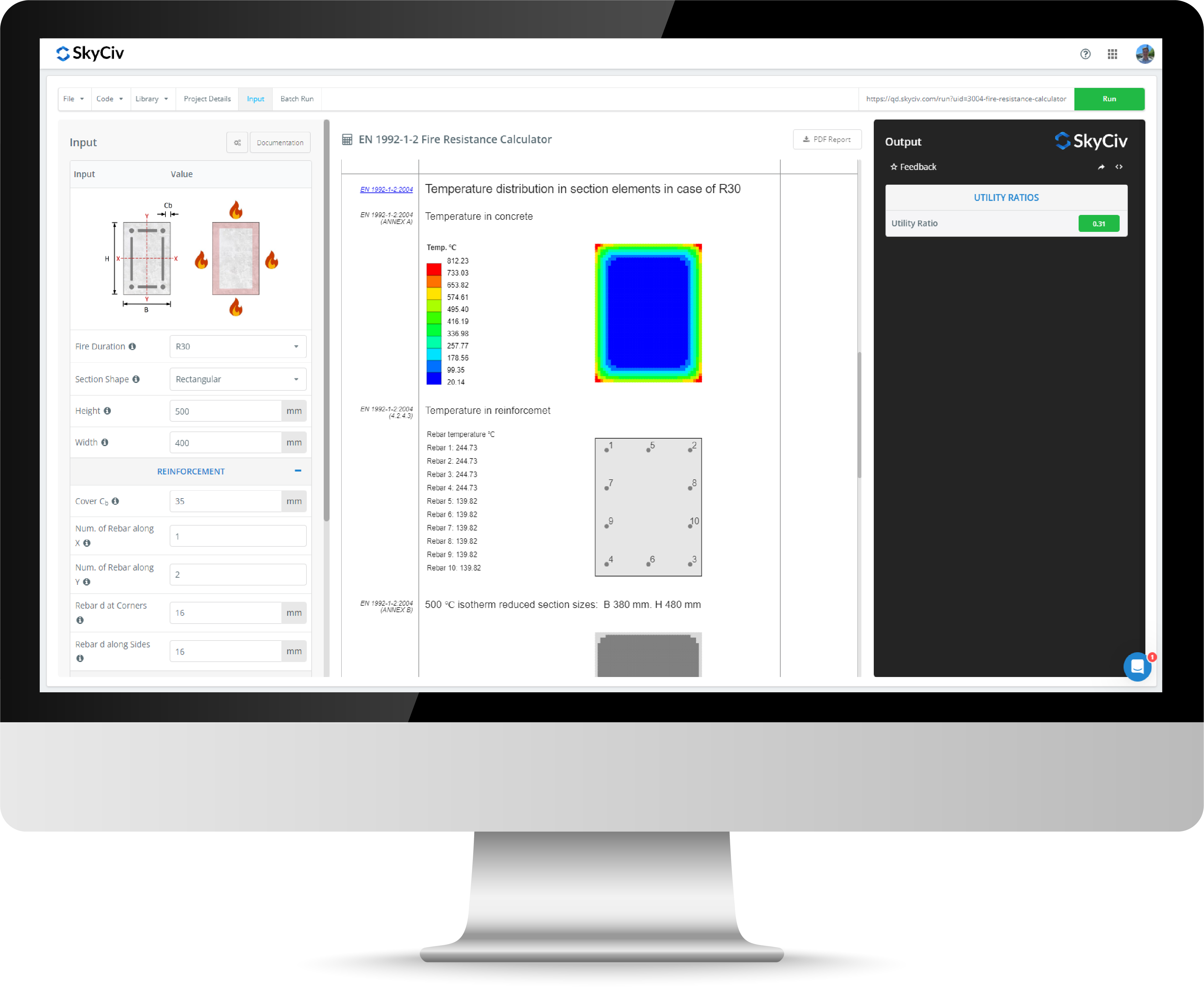Plate Buckling Calculator
The SkyCiv Plate Buckling Calculator is a free tool for engineers analyzing Buckling Stress within plates using both plate and material properties. Plate buckling is the instability in plates when subjected to compressive forces. Consequently the plate may undergo deformation or warping (out-of-plane displacements) which results in buckling. This plate buckling analysis tool is crucial for engineers to utilize when analyzing structural integrity in applications such as bridges or even aircrafts. By using this tool, engineers are able to calculate the buckling stress value and make informed decisions to ensure the plates are able to withstand various loads and conditions without deformation or buckling.
About the Plate Buckling Calculator
What does Buckling Stress Measure?
Buckling Stress measures the critical stress levels at which a plate can withstand compressive loads based on variables such as plate and material properties. This value is used to determine when the plate becomes susceptible to deformation or lateral deflection as it represents the maximum stress value the plate can withstand and endure. The plate buckling theory allows for engineers to analyze the stability and integrity of the plate with consideration of plate and material properties and ensure stability, structural integrity and safety.
How is Plate Buckling Calculated?
The Plate Buckling Calculator determines the Buckling Stress value for a plate and is calculated using the following inputs:
Plate Properties:
- Support Type
- Length of Plate (a)
- Width of Plate (w)
- Thickness of Plate (t)
Material Properties:
- Young’s Modulus (E)
- Poisson’s Ratio (v)
Plate Buckling Example
We will now walk through all the required Plate Buckling Formulas with an example using the following inputs:
- Plate Properties:
- Support Type: Edges b simply supported, one edge a clamped, other edge a free
- Length of Plate (a): 582 mm
- Width of Plate (b): 249 mm
- Thickness of Plate (t): 13.15 mm
- Material Properties:
- Young’s Modulus (E): 200,000 MPa
- Poisson’s Ratio (v): 0.27
- Using the Plate Properties, the Aspect Ratio (a/b) can be calculated using the following aspect ratio formula:

- Based off the aspect ratio value and selected support type, the Coefficient K Value can be determined using the corresponding Aspect Ratio (a/b) and Coefficient K Values table provided below for “Edges b simply supported, one edge a clamped, other edge a free”:

- As there is no direct corresponding coefficient K for an aspect ratio (a/b) of 2.337, we will be required to use the Coefficient K Interpolation formula:

- Lastly, we will use the Plate Buckling Equation to determine the Buckling Stress Value which requires all the previous inputs and calculated values:

What is Plate Buckling Coefficient K?
The Plate Buckling Coefficient K is a crucial factor and parameter which is used to calculate and determine the critical buckling stress value. The coefficient K is influenced by various variables which include: the aspect ratio (a/b) and support type conditions. Engineers are able to use the coefficient K value in assessing the stability of plates under compressive loads as it is a key factor in calculating plates under compressive loads and assists in designing structures which are able to withstand loads without buckling failure.
Plate Buckling Graph
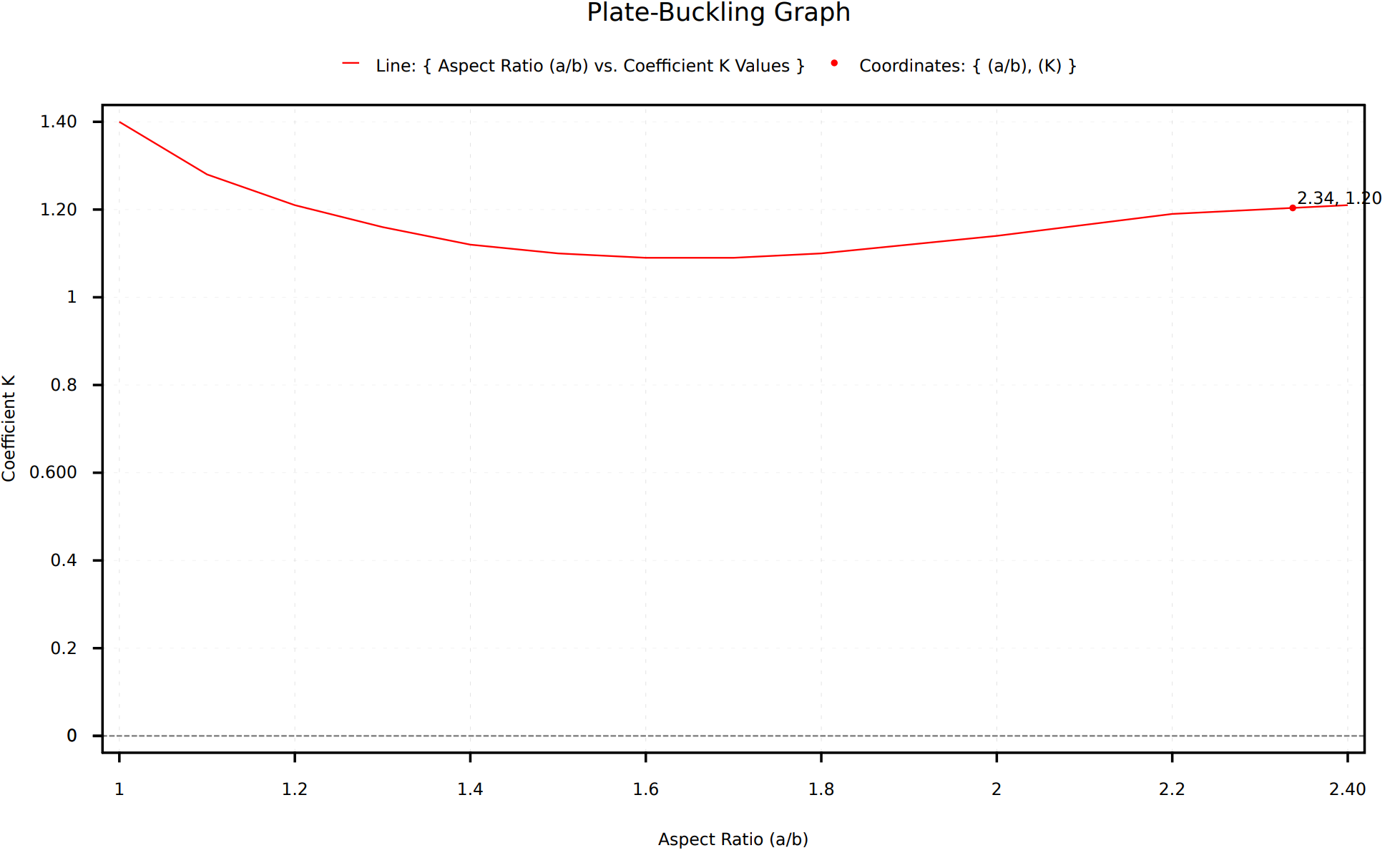
The Plate Buckling Graph displays the relationship between the aspect ratio (a/b) of a plate and the corresponding plate buckling coefficient K based on the support type. The aspect ratio is the correlation between the plate’s length (a) to its width (b). And the coefficient K is a factor which is used to account for the impact of the dimensions and boundary conditions, hence the relationship between aspect ratio (a/b) and coefficient K.
Using this graph, engineers are able to observe the influence and impact of the aspect ratio over the plate buckling coefficient K, providing valuable insights into the plate’s stability under different plate and material properties. By displaying a visual representation of the Plate Buckling relationship between aspect ratio (a/b) and coefficient K, engineers are able to make informed decisions and accommodate for possible plate deformations and behaviors under compressive loads to ensure stability and safety.
Plate Buckling Stress Calculator FAQs
How to use a Plate Buckling Calculator?
To use the SkyCiv Plate Buckling Calculator, follow these steps:
- Input plate properties:
- Support Type
- Length of Plate (a)
- Width of Plate (b)
- Thickness of Plate (t)
- Input material properties:
- Young's Modulus (E): Modulus elasticity of the plate.
- Poisson's Ratio (v): Relationship between transverse and axial strain for the plate.
- Based on your inputs, the calculator interface will display the Buckling Stress value as well as the Plate-Buckling Calculations and Plate-Buckling Graph.
What units does the Plate Buckling Stress Calculator support?
The Plate Calculator supports both metric and imperial units.


